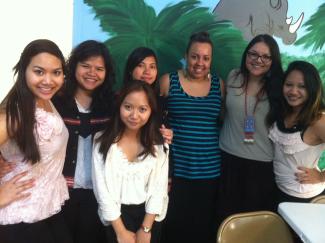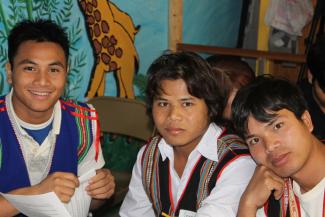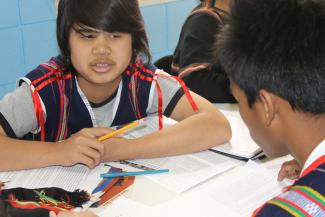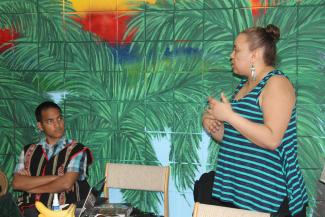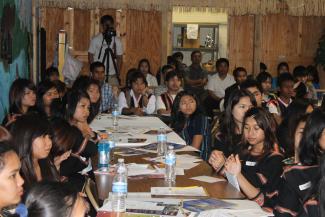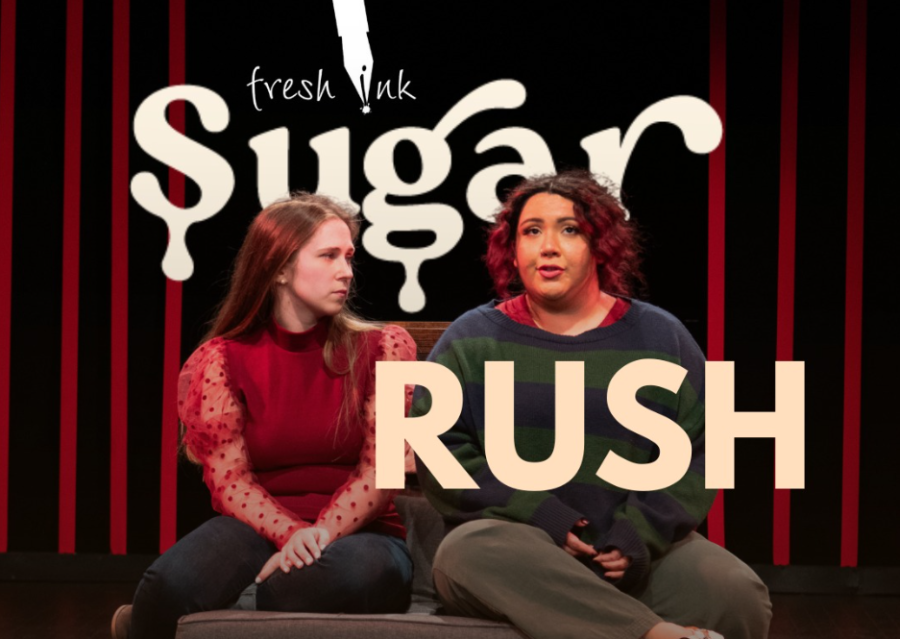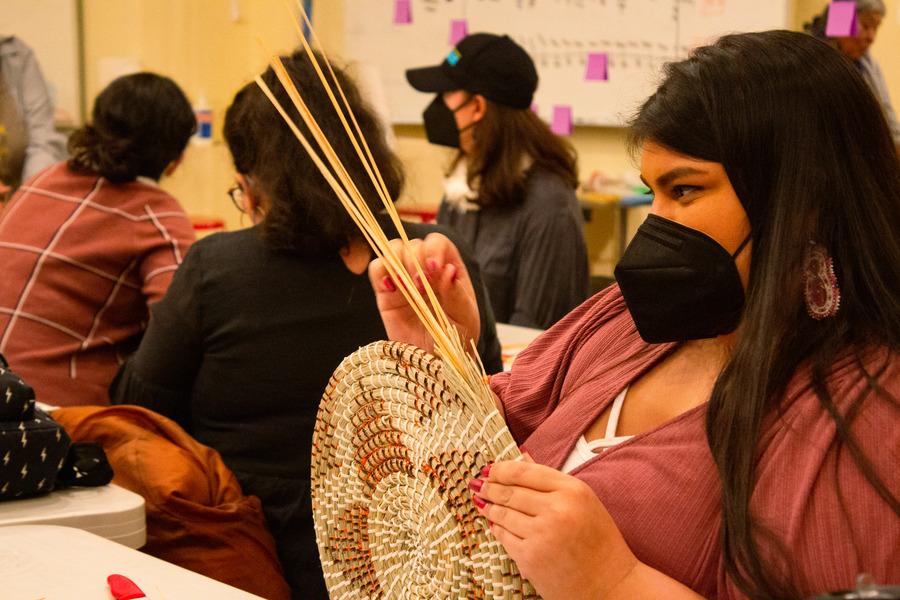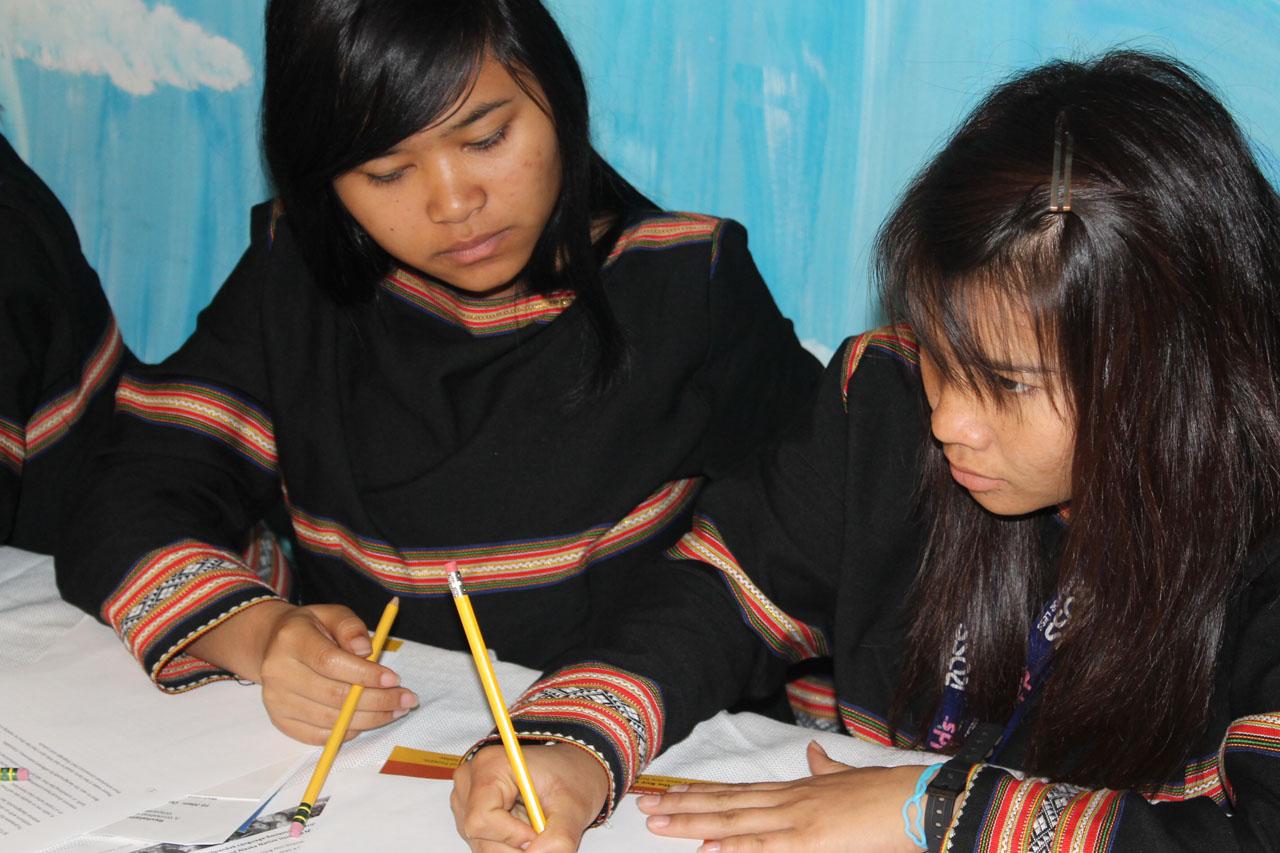
This past weekend Cultural Survival’s Endangered Languages Program Manager Jennifer Weston and Tracy Kelley, Wôpanâak Language Reclamation Project apprentice hosted a day-long workshop on Indigenous language revitalization projects with more than seventy tribal youth at the Montagnyard Pinecroft Learning Center and Church in Greensboro, North Carolina. The high school students are part of an active refugee community numbering more than 4,000, and all speak one or more Indigenous languages originating in the central highlands of Vietnam, and are learning or already speak English.
“We were invited by the Underrepresented Nations and Peoples Organization based in Amsterdam to meet with the Greensboro tribal youth group about film, web, and language revitalization projects they can implement locally through their youth and community associations. The students were really eager to learn about Indigenous cultures and languages in the U.S., so we used OurMotherTongues.org and a series of film clips to explore Indian Country’s diversity – with a special focus on master-apprentice and other language immersion programs like the Euchee, Sauk, and Wampanoag,” said Weston.”
The youth have been working with UNPO and Greensboro youth coordinator Yiu Ksor to build a webpage showcasing their rich cultural heritage, but also face daily challenges to tribal language use in an English-dominant society. Workshop sessions focused on developing interview questions based on those featured on Ourmothertongue.org, selecting interview subjects, brainstorming graphics based on cultural symbolism, and fostering multigenerational empowerment in tribal communities impacted by displacement, land takings, and language oppression. All participants received a bound copy of the United Nations Declaration on the Rights of Indigenous Peoples, and learned about Cultural Survival’s work to implement the international human rights instrument.
“We wanted them to experience the pride our tribal youth are feeling for our languages today, and to see and touch examples of our traditional arts that we continue to create for contemporary and ceremonial contexts. We started the day with mutual goals to learn about one another’s tribal languages and cultures, and to think through the web content development process – generating interview questions for the stories you want to tell online, and then visualizing the graphic presentation and brainstorming iconic imagery that encompasses cultural values,” said Weston. “For example, we talked about the significance of the loon and water birds for the Alutiiq and other island and coastal Indigenous peoples in the U.S., and looked at traditional and contemporary uses of feathers in tribal regalia, ceremonies, and dances. I also shared with them the significance of the morning star in Lakota culture and spirituality, and passed around beadwork and quilted examples of how this symbol of knowledge, first light, and wisdom, appears repeatedly in our traditional arts. “
Kelley, who works full time as a Wampanoag language apprentice in a two-year language acquisition and curriculum development project funded by the Administration for Native Americans, walked participants through a typical day, week, and quarter as a committed language learner and teacher working with all age groups. “I had an inspirational day centered around culture/language survival, and I always get my love of language rejuvenated with days like these. I felt a strong sense of solidarity with the Indigenous people I met and was glad I could offer any help I could regarding language revitalization,” she said.
“It’s really hard to learn different languages but it’s really fun, and it brings me happiness, so I whatever I have learned I must keep it,” wrote one workshop participant at the end of the day, which opened and closed with prayers in Indigenous languages.
“Today I’ve learned that it is important to know and keep up with your own language so that you can keep passing [it on] and teaching it to your next generations to come,” wrote Chao Kpa.
“When we learn our own language it’s pretty amazing,” wrote another participant. “We can still speak the [English] language that we have learned, but let’s not forget about our own language. Someday our native language can pass to our children and their children as generations continue.”
“Today I learned that we have to think about our history for the future generations… as we keep searching and looking to refresh our mother language to let the world know who we are on this earth. I was learning with great heart today, feeling our cultures and languages. ”
“Thank you for coming and spending your time to teach us. I am so thankful for what you did. I learned how important it is, and how brave those people are to stand firm. Thank you!”
“I learned we can maintain and learn our language through community, and by helping each other out in simple ways. We should never let our language go away.”
